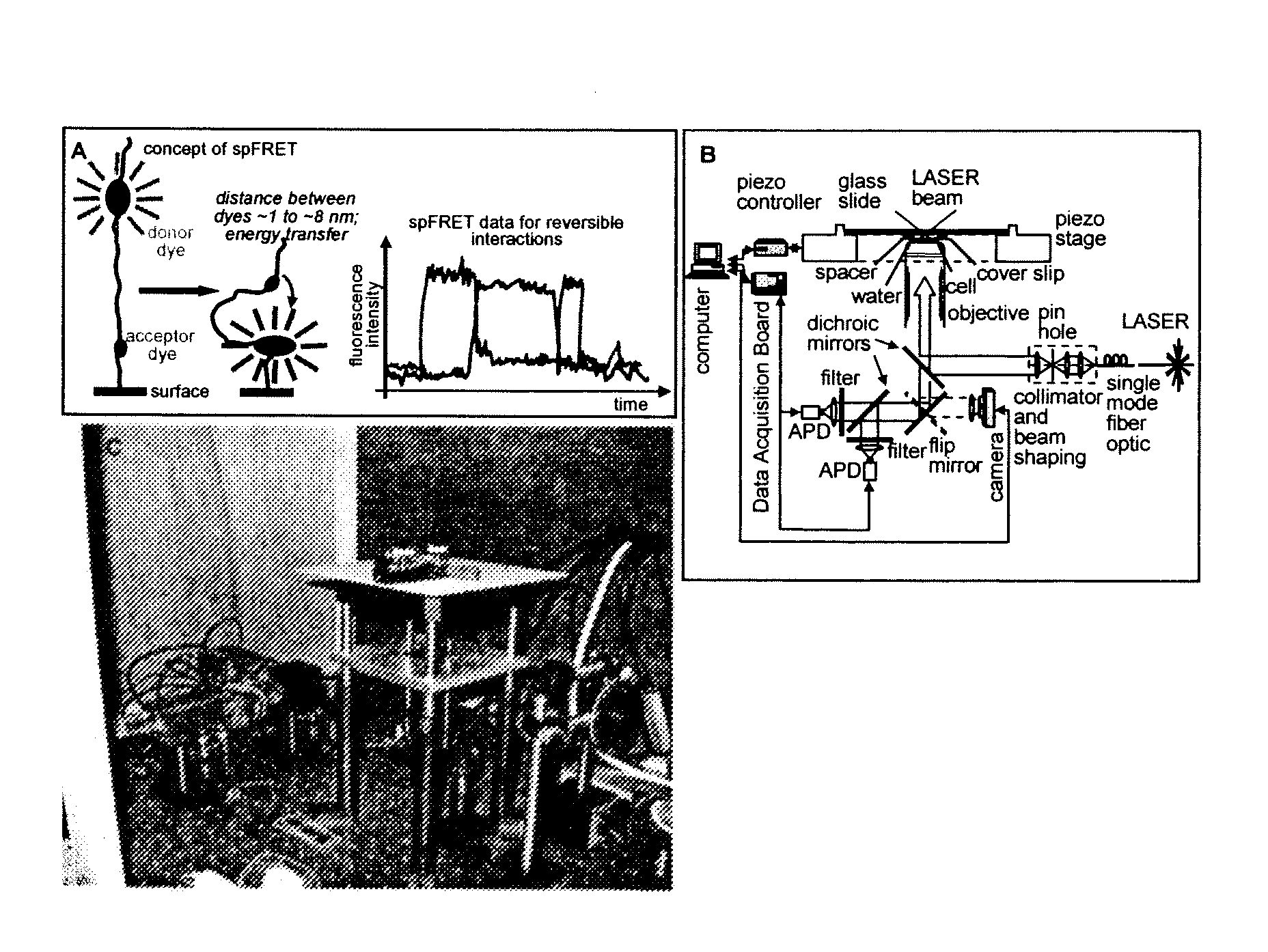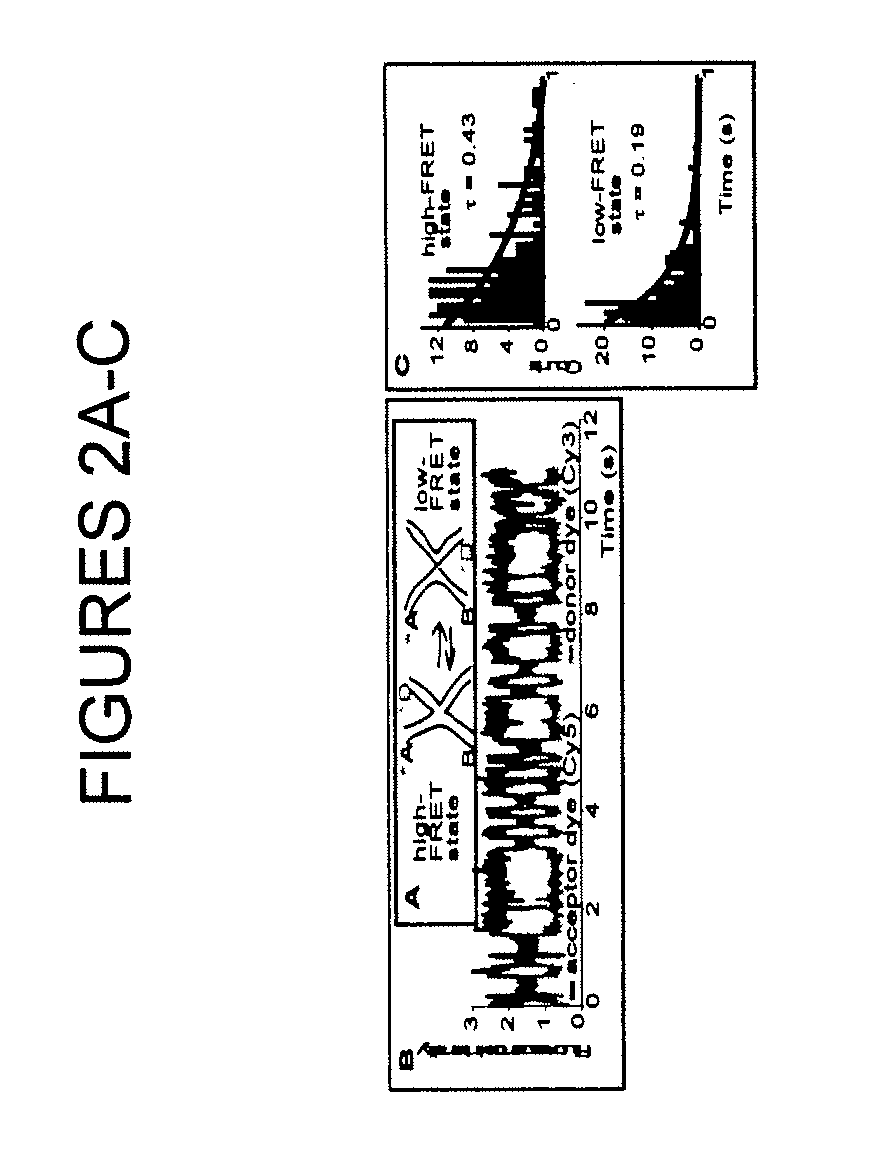Nucleosome-based biosensor
a biosensor and nucleosome technology, applied in the field of nucleosome-based biosensors, can solve the problems of ligand-receptor binding per se, natural ligands or artificial modulators have yet to be identified, and library creation cannot provide information
- Summary
- Abstract
- Description
- Claims
- Application Information
AI Technical Summary
Problems solved by technology
Method used
Image
Examples
Embodiment Construction
[0022]As noted, the present invention provides a nucleosome-based biosensor, as well as methodology for making and using the biosensor, particularly in the context of detecting transcriptional activity and identifying inducers affecting such activity. A central component of the inventive biosensor is a nucleosome-forming DNA that contains at least one transcription regulating DNA sequence.
[0023]In one biosensor configuration, the DNA is tagged with two labels, while the histone octamer is unlabeled. Another configuration is characterized by a placement of the labels on both nucleosome-forming DNA and nucleosome histone octamer. Pursuant to a third configuration, labels are associated only with histone proteins, while the DNA is not tagged.
[0024]With an appropriate detector, as discussed below, a biosensor of the invention can monitor the dynamic state of a single nucleosome or a population of nucleosomes, by measuring an emission signal associated with the labels.
Nucleosomes
[0025]In...
PUM
| Property | Measurement | Unit |
|---|---|---|
| Time | aaaaa | aaaaa |
| Fluorescence | aaaaa | aaaaa |
Abstract
Description
Claims
Application Information
 Login to View More
Login to View More - Generate Ideas
- Intellectual Property
- Life Sciences
- Materials
- Tech Scout
- Unparalleled Data Quality
- Higher Quality Content
- 60% Fewer Hallucinations
Browse by: Latest US Patents, China's latest patents, Technical Efficacy Thesaurus, Application Domain, Technology Topic, Popular Technical Reports.
© 2025 PatSnap. All rights reserved.Legal|Privacy policy|Modern Slavery Act Transparency Statement|Sitemap|About US| Contact US: help@patsnap.com



